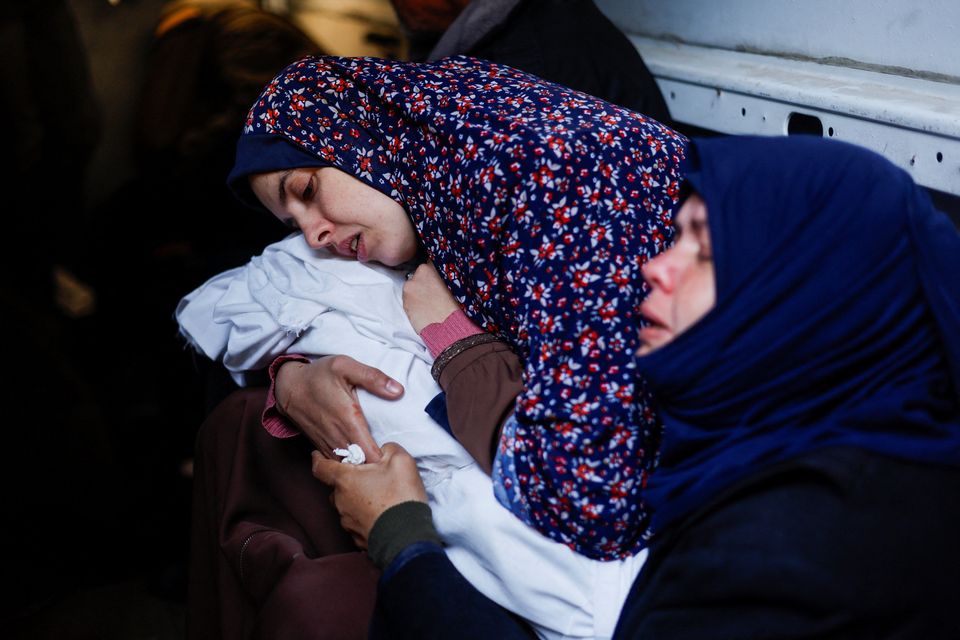Tragic events unfolded early Sunday morning outside a Rafah hospital as grief-stricken women mourned beside the lifeless bodies of the Abu Anza family, fourteen of whom perished in an overnight airstrike on their home. Relatives bid farewell to their loved ones, including two infant twins, Wissam and Naeem Abu Anza, born a few weeks into the Gaza war, laid to rest in a sombre ceremony.
The Abu Anza family’s matriarch, Rania Abu Anza, who also lost her husband in the attack, lamented, “My heart is gone. I haven’t had enough time with them.”
Subsequently, Gaza authorities reported that at least eight individuals were killed when an airstrike targeted a truck transporting food aid from a Kuwaiti charity. At the time of reporting, there was no immediate comment from Israeli officials regarding the incident.

The conflict erupted in October following Hamas militants’ incursion into Israeli territories, resulting in the deaths of 1,200 individuals and the capture of 253 hostages, as per Israeli accounts. Since then, Israeli forces have reportedly claimed the lives of over 30,000 Palestinians, according to Gaza health authorities, with thousands more feared deceased and unrecovered beneath the rubble.
Large swathes of the Gaza Strip have been decimated, rendering nearly the entire population homeless, while the United Nations estimates that a quarter of Gazans face imminent famine.
Residents recounted heavy bombardment overnight in Khan Younis, Gaza’s primary southern city, situated just north of Rafah. In more northern regions, where aid access has been restricted, Gaza health authorities reported that fifteen children had succumbed to malnutrition or dehydration within the confines of Kamal Adwan Hospital, lacking power for its intensive care unit. Concerns mount for the lives of six additional children in critical condition.
In response to the escalating humanitarian crisis, Washington dispatched 38,000 meals via military aircraft into Gaza on Saturday. However, aid agencies caution that this intervention offers only marginal alleviation given the magnitude of the crisis.
The lead-up to the anticipated ceasefire has been marred by a surge in violence, with last week witnessing the deaths of 118 individuals and the injuries of hundreds near a humanitarian convoy.
Addressing the incident, Israeli authorities claimed that their preliminary investigation indicated that the majority of casualties were the result of a stampede. Military spokesperson Daniel Hagari stated that Israeli forces initially resorted to warning shots and later fired upon individuals identified as “looters,” posing an imminent threat.
Muatasem Salah, a member of the Emergency Committee at Gaza’s Ministry of Health, contradicted the Israeli account, asserting that wounds sustained by the victims were consistent with heavy-caliber bullet fire. He dismissed claims of fatalities resulting from overcrowding or trampling as inaccurate.
The situation in Gaza remains dire, with the prospects of a ceasefire hanging in the balance as diplomatic efforts continue amidst escalating violence and humanitarian suffering.


